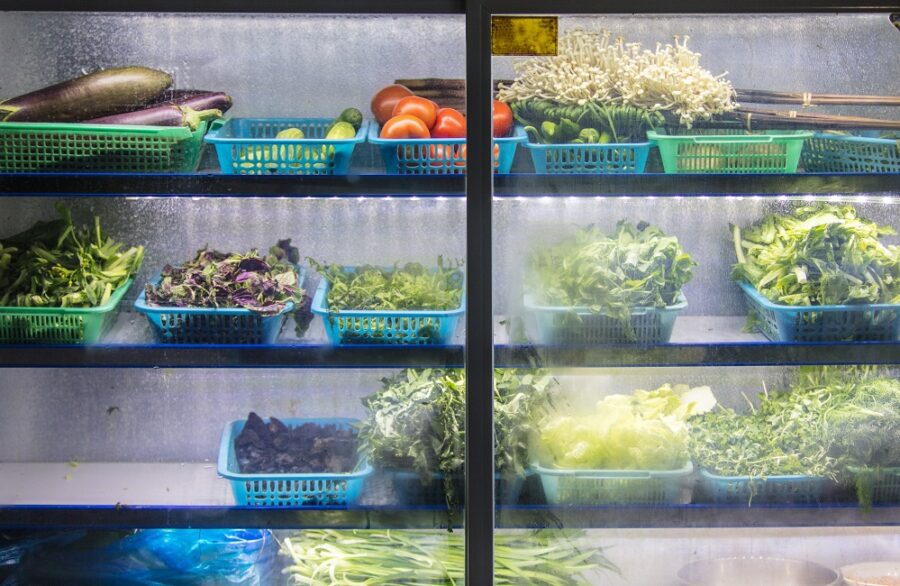
Our Blog
Boosting the Retail Customer Experience: Strategies for Success During COVID
Written by: Parcel Pending
6 Min Read
Published: October 18, 2020
Updated: April 10, 2023
The challenges facing retailers today are rampant: social distancing, changing health requirements, limited store capacity, nervous customers, and the need for profits. However, savvy retail managers recognize that embracing a strong customer experience mindset lines them up for long-term success. With all these changes in the retail industry, you may be wondering how you can still provide an excellent shopping experience for your customers.
As Forrester Research defines it, customer experience is simply “how customers perceive their interactions with your company”1. Notice that this definition includes both intended and unintended messaging. For example, it’s easy for marketers to control outbound content (website copy and social media posts) but forget about important and overlooked interactions such as call center conversations, on-hold wait times, and live chats.
An overwhelming amount of customer data paints a clear picture of the relationship between customer experience to customer loyalty. 73% of consumers say a good experience is key in influencing their brand loyalties2. Loyal customers are five times more likely to purchase again and four times more likely to refer a friend to the company3. American consumers will pay 17% more to purchase from a company with a reputation for great service4. And, the number one reason customers switch brands is that they feel unappreciated5. Customer-centric companies are 60% more profitable than companies that don’t focus on customers6. In short, sub-par customer experience at a retail business is no longer acceptable; superior customer engagement cements loyalty, boosts referrals, and profitability.
The clear question is then: how do you create superior customer service? Read on to find out.
Create Seamless Communication Strategies
With brick-and-mortar retail losing foot traffic, alternative communication strategies emerge as a crucial element to your brand’s success. There must be seamless integration between services such as web chat, social media, email, phone, and video to build the brand-client relationship for your retail business. These customer-centric strategies become even more important as face-to-face communication has eroded due to distanced mask-to-mask conversations through plexiglass barriers.
Manage Expectations
Retailers’ communication channels were besieged early in March with questions about orders and payments. Intercon noted a 47% increase in inbound volume since the pandemic started7.
The lesson learned is that honest communication is key as it manages expectations and avoids disappointment. One consumer, for example, reports that the estimated wait time for the next available operator was an astounding 123 hours! The outbound message eventually mentioned that connecting via social media shortens wait times to less than 5 minutes.
Apple and Lululemon, for instance, knew full retail store closings were coming and alerted customers via email to convert interactions to online shopping. Moreover, online retailer ASOS let its customers know that it was increasing its standard delivery by up to 11 days during the pandemic to avoid disappointing its customers. The approach did pay off as the company grew its active customer base by 16%. For retailers, making these kinds of adjustments was absolutely necessary in order to improve brand experience during this difficult year.
Introduce Omnichannel Options: BOPIS – Buy Online Pick Up in Store, & BOPIL® – Buy Online, Pick-up in Locker
BOPIS is the fusion between physical stores and e-commerce. It allows customers to purchase online and pick up in-store. Options here include curbside pickup, pick up at a service desk, and the newest option of picking up at the store — installed smart lockers, also called BOPIL® (Buy Online, Pick-up in Locker).
BOPIS grew 28% year-over-year in February compared with 18% in January, and grocery delivery is up by 57%. Most important, however, is that these new engagement models are here to stay. Consumers report high intention to continue using models such as BOPIS (56%) and grocery delivery (45%) after the pandemic8.
Customer Benefits of BOPIS and BOPIL
Customers see picking up their orders in-store as improving their retail experience for these reasons:
- Speed – Welcome to the world of instant gratification. Customers can purchase in the morning and often retrieve their package by lunchtime.
- Safety – Given COVID concerns, contactless delivery means opening a secure locker simply by scanning a bar code from a smartphone without having to touch the locker keypad to enter a PIN number.
- Secure Tracking – Instead of guessing the status of their order, customers are alerted when the order is delivered to the locker and, more importantly, automatically alerted to when and how to retrieve it.
Retailer Benefits of BOPIS and BOPIL
Let’s not ignore the substantial benefits for retailers and how they can provide a better customer experience:
- Increased Foot Traffic – Whether picking up from a locker or customer service desk, the customer is back in your store with the opportunity to purchase again. In fact, 61% of omnichannel shoppers make an unplanned, additional purchase when retrieving their online orders9.
- Lower Operational Costs – Retailers that employ BOPIL saved an average of 45 hours per month managing BOPIS orders.
- Improved Customer Experience – 95% of BOPIS customers are more likely to become returning customers10.
- Lower Last Mile Shipping Costs – Navigating residential delivery has always been complicated and expensive, yet BOPIS and BOPIL reduce costs significantly.
Explain New COVID Policies
With so many forced changes in retail, it’s critical to communicate new store hours and policies quickly. Speak with the customer in mind. Rather than simply regurgitating state-wide mandates, explain the rationale behind the policy changes. Keep it on-brand with your voice and tone.
Note that constant cleaning and fumigating of premises has recently shown to do little to mitigate the virus according to New York Times, but rather simply assuages customer fear11. It’s up to you to explain your rationale in a way your customers comprehend.
Go the Extra Mile for Your Customers
As researchers explain in their HEART model, look for ways to help in these turbulent times: extended return policies, flexible credit card policies, and deferred payments all benefit both the customer and your relationship12.
Additionally, look for ways to give back to the communities you serve. Distilleries that switched to hand sanitizers and restaurants that served front-line workers, for example, built an imprimatur of goodwill. Consumer behavior has fundamentally shifted and embracing new strategies now will pay off later.
Retailers are showing an increased interest in options like BOPIL, ones that involve little-to-no human contact to protect both their customers and their employees. Having these protections in place is increasingly important to both employees and consumers, especially as stores continue to navigate changing health and safety regulations.
Interested in finding out how BOPIL can help your business and your customers? Learn more about our retail parcel locker solutions here.
Sources:
- Manning, Harley. Forrester. Customer Experience Defined. (2010, November 23). https://go.forrester.com/blogs/definition-of-customer-experience/.
- Clark, David & Puthiyamadam, Tom. PWC. Experience is everything. Get it right. (2017). https://www.pwc.com/future-of-cx.
- Dorsey, Moira. Qualtrics XM Institute. Research Recap: ROI of Customer Experience, 2020. (2020, September 17). https://www.xminstitute.com/blog/research-recap-2020-roi-cx/.
- American Express. (2017, December 15). #WellActually, Americans Say Customer Service is Better Than Ever [Press release]. Retrieved from: https://markets.businessinsider.com/news/stocks/wellactually-americans-say-customer-service-is-better-than-ever-1011547745
- Vonage. (n.d.) The $62 Billion Customer Service Scared Away [Infographic]. Retrieved from: https://www.vonage.com/resources/
- MacDonald, Steven. SuperOffice. How to Create a Customer-Centric Strategy for Your Business. (2020, November 16). https://www.superoffice.com/blog/how-to-create-a-customer-centric-strategy/.
- Kashyap, Karthik. Toolbox. 6 Smart Ways To Improve the Customer Experience for Retail Post-COVID-19. (2020, September 30). https://www.toolbox.com/marketing/customer-experience/articles/6-smart-ways-to-improve-the-customer-experience-for-retail-post-covid-19/.
- Briedis, Holly, et al. McKinsey & Company. Adapting to the next normal in retail: The customer experience imperative. (2020, May 14). https://www.mckinsey.com/industries/retail/our-insights/adapting-to-the-next-normal-in-retail-the-customer-experience-imperative.
- Parcel Pending. Omnichannel Retail Strategy: Bringing Online Shoppers to Brick & Mortar Stores. (2020, June 1). /en-ca/blog/omnichannel-retail-strategy-bringing-online-shoppers-to-brick-mortar-stores/.
- Parcel Pending. (2019). Fortune 500 Retailer Boosts Customer Satisfaction & Saves Valuable Staff Time with Parcel Pending [Case study]. Retrieved from: https://info.parcelpending.com/fortune-500-retailer-bopis-bopil
- Ives, Mike & Mandavilli, Apoorva. The New York Times. The Coronavirus Is Airbone Indoors. Why Are We Still Scrubbing Surfaces?. (2020, November 18). https://www.nytimes.com/2020/11/18/world/asia/covid-cleaning.html.
- Waldron, Ted & Wetherbe, James. Harvard Business Review. Ensure That Your Customer Relationships Outlast Coronavirus. (2020, April 1). https://hbr.org/2020/04/ensure-that-your-customer-relationships-outlast-coronavirus.





